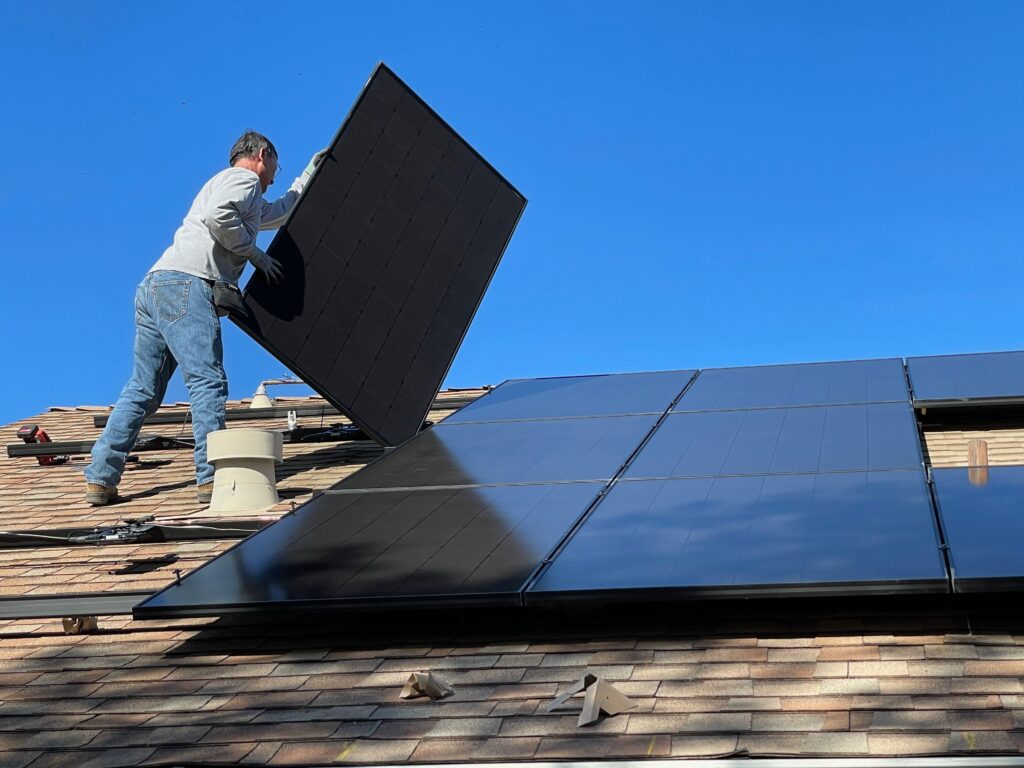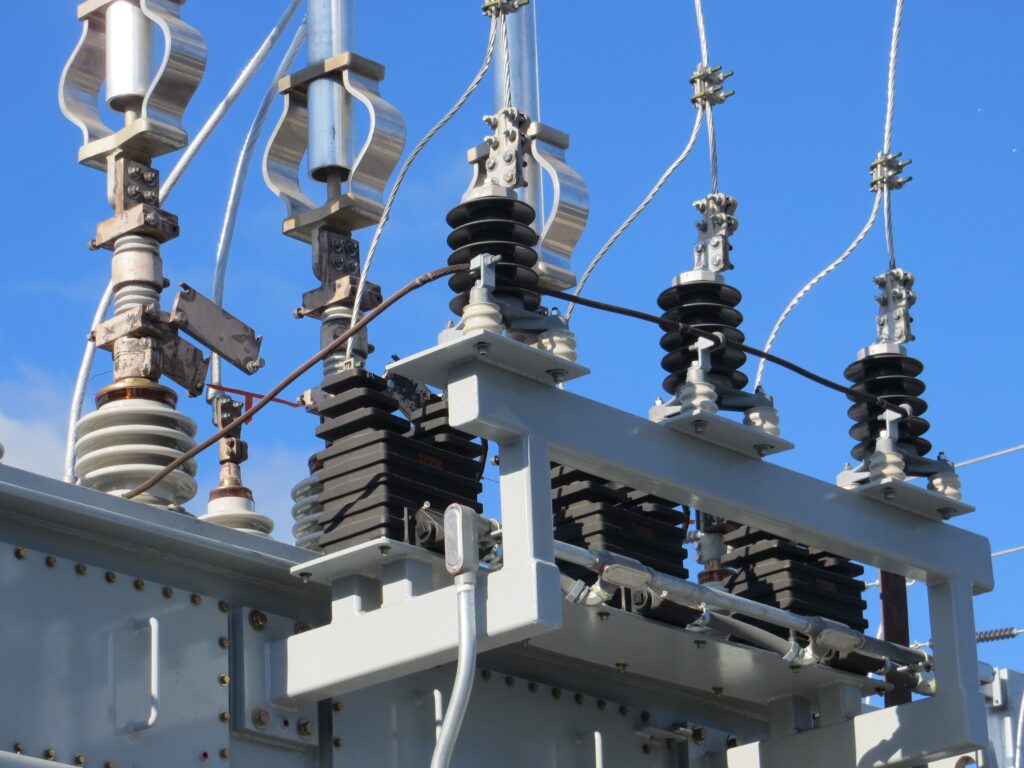Imagine being able to power your devices, appliances, and even your entire home using nothing but the sun’s energy. With the increasing popularity of solar panels, harnessing solar power has become more accessible than ever. But, if you’re wondering how many batteries you can hook up to a single 100 watt solar panel, you’ve come to the right place. In this article, we’ll explore the possibilities and limitations of connecting batteries to a 100 watt solar panel, helping you harness the power of the sun efficiently and effectively. So, let’s dive in and discover how to maximize your solar energy potential!

Understanding Solar Energy and Solar Panels
Solar energy is a renewable source of power that is generated from the sun’s rays. It is a clean and sustainable form of energy that can be harnessed and used to power various devices and systems. Solar panels, also known as photovoltaic panels, are the key component of a solar energy system. They are designed to convert sunlight into electrical energy through the process of photovoltaic conversion.
Basics of Solar Energy
Solar energy is created through the fusion reactions that occur within the core of the sun. These reactions generate heat and light, which travel to the Earth in the form of electromagnetic radiation. When this radiation reaches the Earth’s surface, it can be absorbed and converted into usable energy.
Solar panels are made up of multiple photovoltaic cells, which are responsible for converting sunlight into electricity. These cells are made of semiconducting materials, such as silicon, that can generate an electric current when exposed to sunlight. When the sunlight hits the surface of a solar panel, it excites the electrons in the semiconducting material, causing them to move and generate an electrical current.
How Solar Panels Work
Solar panels consist of several layers, including a top layer of protective glass, a layer of photovoltaic cells, and a bottom layer of metal backing. The photovoltaic cells are made of two layers of silicon, one with a positive charge and the other with a negative charge. When sunlight hits the cells, it creates an electric field across the layers, causing the electrons to flow and create a current.
This current is then collected and transferred to an inverter, which converts it from direct current (DC) to alternating current (AC). AC is the type of electricity that can be used to power household appliances and electronics. The converted AC electricity is then used to power homes, businesses, or stored in batteries for later use.
The Role of Batteries in a Solar Panel System
Batteries play a crucial role in a solar panel system by providing energy storage. While solar panels generate electricity during the day when the sun is shining, there may not always be a demand for that electricity at that exact moment. By using batteries, the excess electricity can be stored for use during times when the solar panels are not producing electricity, such as at night or during cloudy periods.
Function of Batteries in Solar Power
Batteries store the excess electricity generated by solar panels and release it when needed. This allows for a continuous and reliable supply of electricity, even when the sun is not shining. In addition, batteries can also provide backup power in the event of a power outage, ensuring that critical systems and appliances can still operate.
Types of Solar Batteries
There are several types of batteries that are commonly used in solar panel systems. The most common types are lead-acid batteries, lithium-ion batteries, and saltwater batteries.
Lead-acid batteries are the oldest and most established type of battery technology. They are affordable and have a relatively long lifespan, but they require regular maintenance and can be bulky and heavy.
Lithium-ion batteries are becoming increasingly popular due to their higher energy density, longer lifespan, and lighter weight. They also require minimal maintenance compared to lead-acid batteries.
Saltwater batteries are a newer type of battery technology that uses a solution of saltwater as the electrolyte. They are non-toxic, long-lasting, and environmentally friendly. However, they have a lower energy density compared to lithium-ion batteries.
Choosing the Right Battery
When selecting a battery for a solar panel system, it is important to consider factors such as capacity, lifespan, maintenance requirements, and cost. The capacity of a battery refers to its ability to store energy and is typically measured in kilowatt-hours (kWh). The lifespan of a battery refers to how long it can be used before it needs to be replaced.
It is also important to consider the specific energy requirements of the system and the amount of sunlight available in the area. Consulting with a solar energy professional can help determine the optimal battery size and type for a particular solar panel system.

Sizing the Solar Battery Bank
The concept of a battery bank refers to a collection of batteries that are connected together to provide a larger storage capacity. The size of the battery bank needed for a solar panel system depends on factors such as the energy demand, the amount of sunlight available, and the desired level of backup power.
Calculating the Battery Size
To calculate the size of the battery bank needed, the energy consumption of the system must be determined. This can be done by calculating the average daily energy demand and multiplying it by the desired number of backup days.
For example, if the average daily energy demand is 10 kWh and a backup of two days is desired, the battery bank should have a capacity of at least 20 kWh.
Common Battery Sizes Available
Solar batteries are available in a range of sizes, from small portable batteries to large stationary batteries. Common battery sizes include 12V, 24V, and 48V systems. The voltage of the battery bank should match the voltage of the solar panel system for optimal performance.
Determining Solar Panel Energy Output
The energy output of a solar panel refers to the amount of electricity it can generate under ideal conditions. Several factors affect the energy output of solar panels, including the angle and orientation of the panels, the amount of sunlight received, and the efficiency of the panels.
Factors Affecting Solar Panel Output
The angle and orientation of the solar panels play a significant role in maximizing energy output. Panels should be positioned at an angle that allows them to receive the most direct sunlight throughout the day. The ideal angle varies depending on the geographical location and the time of year.
The amount of sunlight received by the panels is also influenced by factors such as shading from trees or buildings, cloud cover, and atmospheric conditions. Panels should be installed in locations where they can receive the maximum amount of sunlight throughout the year.
The efficiency of the solar panels is another important factor to consider. High-efficiency panels can convert a greater percentage of the sunlight they receive into electricity, resulting in higher energy output.
Methods to Measure Solar Panel Power Output
The power output of solar panels is typically measured in watts (W) or kilowatts (kW). The wattage rating of a solar panel represents the maximum amount of power it can generate under ideal conditions. This rating is usually indicated on the panel and can be used to compare the performance of different panels.
To accurately measure the energy output of a solar panel system, a device called a watt meter or power meter can be used. This device measures the power output in real-time, allowing for monitoring and optimization of the system.

Characteristics of 100 Watt Solar Panel
A 100 watt solar panel is a popular choice for small-scale solar projects, such as powering outdoor lights, charging small electronics, or providing supplemental power to an RV or boat. These panels are compact, lightweight, and easy to install.
Features and Specifications of a 100 Watt Solar Panel
A typical 100 watt solar panel consists of multiple photovoltaic cells, encased in a durable frame with a tempered glass cover. The frame is designed to provide protection against weather conditions and ensure the longevity of the panel.
The specific features and specifications of a 100 watt solar panel can vary depending on the manufacturer and model. It is important to consider factors such as efficiency, durability, and warranty when selecting a 100 watt panel.
Energy Production of a 100 Watt Solar Panel
Under ideal conditions, a 100 watt solar panel can generate approximately 400-600 watt-hours (Wh) of electricity per day. However, the actual energy production will depend on factors such as the amount of sunlight received, the angle and orientation of the panel, and any shading or obstructions.
Matching Batteries with a 100 Watt Solar Panel
When determining the battery capacity needed to complement a 100 watt solar panel, it is important to consider factors such as the energy demand, the desired level of backup power, and the amount of sunlight available.
What Battery Capacity Matches a 100 Watt Panel
To determine the appropriate battery capacity, the average daily energy demand should be calculated. If the average daily energy demand is 10 kWh, for example, a battery with a capacity of at least 20 kWh would be suitable to match a 100 watt solar panel.
How Many Batteries are Needed
The number of batteries needed will depend on the desired backup power and the capacity of each individual battery. If a backup of two days is desired and each battery has a capacity of 10 kWh, then two batteries would be needed to match a 100 watt solar panel.
It is important to ensure that the batteries are properly connected and configured to the solar panel system for optimal performance and efficiency. Consultation with a solar energy professional can help determine the appropriate battery configuration for a specific project.
Implications of Hooking up Multiple Batteries
Using multiple batteries in a solar panel system can provide several advantages, but it also comes with some considerations.
Pros and Cons of Using Multiple Batteries
One of the main benefits of using multiple batteries is the increased storage capacity, which allows for longer periods of backup power. Multiple batteries can also provide a more balanced load distribution and can be more efficient in charging and discharging.
However, using multiple batteries also comes with certain challenges. Each additional battery adds complexity to the system, requiring proper wiring, charging, and maintenance. It is important to ensure that the batteries are compatible and properly balanced to avoid overcharging or undercharging.
How to Connect Batteries to a Solar Panel
When connecting multiple batteries to a solar panel system, it is important to use the correct wiring configurations. The batteries should be connected in either a series or parallel configuration, depending on the desired voltage and capacity.
In a series configuration, the positive terminal of one battery is connected to the negative terminal of the next battery, creating a higher voltage. In a parallel configuration, the positive terminals are connected together, as well as the negative terminals, creating a higher capacity.
Proper fusing and circuit breakers should also be incorporated into the system to ensure safety and protection against overcurrent. It is recommended to consult with a solar energy professional or electrician when connecting multiple batteries to a solar panel system.
Safety Measures when Hooking Up Multiple Batteries
When hooking up multiple batteries, it is important to follow safety guidelines to prevent accidents and ensure the longevity of the batteries. Here are some safety measures to consider:
-
Ensure proper ventilation: Batteries can produce gases, including hydrogen, which can be explosive in high concentrations. It is important to provide adequate ventilation to prevent the accumulation of gases.
-
Use appropriate cables and connectors: Use cables and connectors that are rated for the anticipated currents and voltages. Cables should be properly insulated to prevent short circuits and other electrical hazards.
-
Avoid overcharging and over-discharging: Overcharging can lead to battery damage and reduced lifespan, while over-discharging can cause irreparable damage. Utilize charge controllers or battery management systems to regulate the charging and discharging processes.
-
Protect against overheating: Batteries should be installed in a location where they are protected from extreme temperatures. Excessive heat can shorten the lifespan of batteries and reduce their overall performance.
-
Regularly inspect and maintain the batteries: Check the battery connections, cables, and terminals regularly to ensure they are clean and secure. Perform routine maintenance tasks, such as cleaning and equalizing the batteries, as recommended by the manufacturer.
By following these safety measures, the risk of accidents and damage to the batteries and the solar panel system can be minimized.
Effect of Weather on Battery Performance
Outdoor conditions, including weather, can have an impact on the performance and lifespan of both solar panels and batteries.
Impact of Outdoor Conditions on Solar Panels and Batteries
Extreme temperatures, such as excessive heat or freezing cold, can affect the efficiency and lifespan of solar panels. High temperatures can reduce the energy output and efficiency of the panels, while low temperatures can lead to ice formation or thermal stress.
Weather conditions, such as rain, snow, or hail, can also have an impact on the panels. It is important to ensure that the panels are properly sealed and protected to prevent water ingress or physical damage.
Batteries can also be affected by outdoor conditions. Extreme temperatures can reduce the efficiency and capacity of batteries, while moisture or water exposure can lead to corrosion and damage. It is important to ensure that the batteries are installed in a suitable location, such as a well-ventilated and temperature-controlled area.
Managing Weather-related Issues
To mitigate the impact of weather on solar panels and batteries, several measures can be taken:
-
Regular cleaning: Keep the solar panels clean, especially in areas with heavy dirt, dust, or pollen. Regular cleaning helps maintain the efficiency and performance of the panels.
-
Protection against snow and ice: If the solar panels are located in an area prone to snow or ice, consider installing a snow guard or a system to remove snow to prevent buildup and blockage.
-
Proper installation: Ensure that the solar panels and batteries are installed in a suitable location, taking into account factors such as shading, exposure to extreme temperatures, and protection from weather elements.
-
Utilize protective covers: Protective covers can be used to shield the batteries from direct exposure to sunlight, extreme temperatures, or moisture.
-
Monitor and maintain: Regularly monitor the performance of the solar panels and batteries to identify any issues or abnormalities. Perform routine maintenance tasks as recommended by the manufacturer.
By implementing these measures, the impact of weather on the performance and longevity of solar panels and batteries can be minimized.
Maintenance of Solar Panel and Batteries
Regular maintenance is essential to ensure the optimal performance and longevity of solar panels and batteries.
Basic Maintenance Steps
Here are some basic maintenance steps for solar panels:
-
Regular cleaning: Clean the solar panels using a soft brush or sponge and water to remove dust, dirt, or debris. Avoid using abrasive cleaners or rough materials that can scratch the surface of the panels.
-
Inspect for damage: Regularly inspect the panels for any signs of physical damage, such as cracks, delamination, or loose connections. If any damage is detected, it should be repaired promptly to prevent further issues.
-
Check electrical connections: Ensure that all electrical connections are secure and free from corrosion. Tighten any loose connections and clean any corrosion using a suitable cleaner.
-
Monitor performance: Keep track of the energy output of the solar panels using a monitoring system or a watt meter. Monitor for any significant drops in performance, which may indicate a fault or issue with the panels.
For batteries, the following maintenance steps are recommended:
-
Check electrolyte levels (for lead-acid batteries): If using lead-acid batteries, regularly check the electrolyte levels and top up with distilled water if necessary. Avoid overfilling or underfilling the batteries.
-
Equalize the batteries: Periodically equalize the batteries to ensure a balanced charge across all cells. This helps prevent sulfation and extends the lifespan of the batteries.
-
Clean battery terminals: Clean the battery terminals and connections using a mixture of baking soda and water to remove any corrosion or buildup. Ensure that the terminals are properly tightened after cleaning.
-
Test the battery performance: Use a battery tester or voltmeter to regularly test the performance of the batteries. Check for any significant drops in voltage or capacity, which may indicate a faulty battery.
By following these maintenance steps, the performance and lifespan of solar panels and batteries can be optimized.
Life Expectancy of Batteries and Solar Panels
The life expectancy of solar panels can vary depending on factors such as the quality of the panels, the installation, and the maintenance. On average, solar panels have a lifespan of approximately 25-30 years. However, the efficiency of the panels may gradually decline over time.
The life expectancy of batteries also depends on various factors, including the type of battery, usage patterns, and maintenance. Lead-acid batteries typically have a lifespan of around 3-5 years, while lithium-ion batteries can last anywhere from 5-15 years.
Regular maintenance and proper use can help maximize the lifespan of both solar panels and batteries.
Future Trends in Solar Energy Storage
Advancements in solar energy storage technology are constantly being made, with the aim of improving efficiency, capacity, and cost-effectiveness.
Advancements in Solar Battery Technology
One of the major advancements in solar battery technology is the development of higher-capacity batteries with improved energy density. Researchers are working on the development of new materials and designs that can store more energy in a smaller footprint.
The integration of smart technology and artificial intelligence into solar battery systems is another promising trend. Smart batteries can optimize energy storage and usage based on real-time data, resulting in more efficient and cost-effective systems.
In addition, the use of alternative materials and chemistries, such as solid-state batteries or flow batteries, is being explored to overcome the limitations of current battery technologies.
Impact of Future Trends on Battery-Solar Panel Compatibility
As solar battery technology continues to evolve, it is expected that future batteries will become more compatible with solar panels. Battery systems will likely become more efficient in terms of energy conversion, charge/discharge rates, and overall capacity.
The integration of advanced monitoring and control systems will facilitate better communication and coordination between solar panels and batteries, maximizing the utilization of renewable energy.
Overall, future trends in solar energy storage hold the potential to enhance the performance, reliability, and compatibility of battery systems with solar panels, leading to a more sustainable and efficient utilization of solar energy.
In conclusion, understanding solar energy and solar panels is crucial to harnessing the power of the sun and maximizing the efficiency of solar panel systems. Batteries play a vital role in storing and utilizing the energy generated by solar panels, and selecting the right battery size and type is essential for optimal performance. Weather conditions and proper maintenance should also be taken into account to ensure the longevity and efficiency of solar panels and batteries. With advancements in solar battery technology, the future looks promising for storage solutions that are more efficient, cost-effective, and compatible with solar panels.




